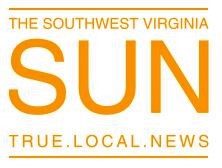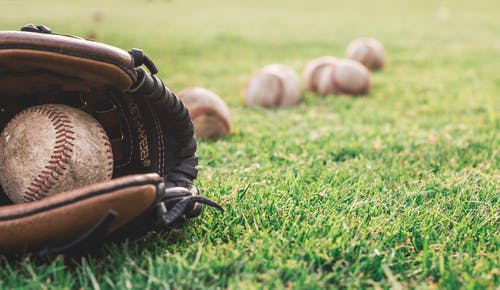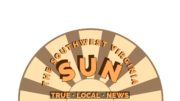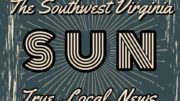By Chad Osborne
Many baseball fans know Whitey Herzog from his days managing the St. Louis Cardinals to three World Series appearances in the 80s and a championship in ’82. But, many years before his success with the likes of Ozzie Smith, Keith Hernandez, Joaquin Andujar and Bruce Sutter in St. Louis, Whitey served as the director of player development for the New York Mets from 1966 to 1972. That role led him to spending several summers in Marion, Virginia, coaching and evaluating the Mets’ young rookie league players. In June 2022, while he was watching the U.S. Open at home with his wife, Mary, Whitey was gracious enough to chat with me on the phone about his time and role in Marion.
Herzog died Monday, April 15, 2024. He was 92.
Below is our conversation, which I originally published December 16, 2022. It has been lightly edited for length and clarity.
To get us started, what can you tell me about your time in Marion?
We really enjoyed Marion as a family. I used to like to reserve a cabin at Hungry Mother State Park. My wife and kids enjoyed it there. We’d go paddle-boat riding. We’d eat lunch there.
The only bad thing about Marion and the Appalachian League was we had a lot of rain in June. We had a lot of rainouts.
And, Dave Graham was instrumental in building the clubhouse for the high school, and Snooks Goodman was his main helper. David was the guy who hired James Plummer. I became very attached to James. He helped me carry all the equipment down to the ball field every day from the high school.
To read more about those Amazing Mets, go to https://marionmets.substack.com/: Rehashing a conversation with Whitey Herzog
But, there were so many good things in Marion, and we enjoyed going to some of the other places [around the Appy League] and some of the nice old ballparks. It was really a very good league for kids [young players] to be playing their first time away from home.
What was Marion like for those players?
It was a fun place. Of all the minor league clubs I visited throughout the years – all the way from the rookie leagues to Triple A – I loved Marion. I used to spend at least a month to six weeks in Marion, Virginia.
We had all the high school players that were drafted at that time come to Marion. And then, for the ones that played in the rookie league the year before, we had like a second-year rookie league in Batavia, New York. Most of the rookie team players were in Batavia, but the guys just signing for the first time came to Marion.
And, we had some great players, some high draft choices. At that time, there were a hell of a lot more high school players drafted than there were college kids. And now, it’s just the opposite. There are a lot more college players drafted than there are high school kids.
When you would come to Marion, what was your role working with the players?
First of all, my theory was once they came to Marion, there was no No. 1 and there were no No. 25 draft choices. They’re all even. And, it was my job to pay just as much attention to the kids that didn’t get a bonus – the kids that were drafted in the top five got a pretty good bonus. At that time, it was $50,000 or $20,000 or something like that.
I tried to treat them all equally. I tried to give them all a fair shot. I wanted them to get the most out of their abilities. I tried to work with as many as I could individually, and with my coaches. Every day they came to the morning workouts, and when they left the field I always wanted them to be a better ball player.
A lot of our workouts, individual and team workouts, were to teach them the cutoffs and relays and everything the same way they do it at the big-league club [New York Mets], and I went and coached all through the organization [from the rookie leagues to Triple A]. So, when the kids finally did get to the big leagues, the ones that survived, they knew exactly how to do rundowns and relays and everything else.
We had workouts every morning at 10 o’clock, and we had to teach the kids [ballplayers] to get up and have breakfast, and eat right and don’t come to the ballpark for a night game every night with a Coke in one back pocket of their uniform and a hot dog in the other. Don’t sleep all day, and stuff like that. The big part of the whole situation in the rookie league is you have to teach the kids not only baseball, you have to be like a father to them and make them realize the need to eat right and to know how to be a professional and to get out bed every morning, get active and be ready to go play every night at the ballpark.
What stood out to you about the Marion ballpark?
The clubhouse that Dave Graham built was really for the high school football team. And, it was probably one of the best minor league clubhouses in our [New York Mets] organization. It was just as good as it was in triple A ballparks. It was a fabulous clubhouse. I imagine it’s still there, and I imagine the football team at Marion [Senior] High School is still using it.
Originally, we had to make the walk up that hill from the field to the high school. The players showered in the high school gym. We had to take all the equipment up there every night. Plummer was really the guy who did all the work. He just carried everything up and down every day. When a player got to the ballpark at 10 o’clock every morning for a workout, all the bats and balls and everything was there, and the uniforms were in the locker room upstairs.
What were the thoughts of the New York Mets organization about Marion?
Marion was a rookie league club. At one time, John Murphy was the general manager [of the New York Mets], and so was Bob Scheffing, and they all came to Marion to see the kids. That was big stuff when the big shots from the Mets came down to Marion. The [New York] Mets would be on the road, and they’d come down and spend a week. I think they all stayed at the Holiday Inn. We had a lot of dinners there, and it was just really a family atmosphere.
What were some of the challenges the New York Mets faced by having a team in Marion?
The only thing I remember that wasn’t very fair was, when I first got there [1966], the Latin players would come up from the Dominican and Venezuela and Puerto Rico and so forth, and it was almost like the town people didn’t really accept them the way they did the American kids. But, after a few years, I think the town became just as good to the Latin players. They cheered for them and took them in their homes, and that’s what I came to like about Marion. The people in Marion were really friendly and outgoing and loved baseball. They spent a lot of hours at the ballpark. The rookie league games would sometimes go three or four hours and there’s no commercials [he joked]. There were a lot of games with a lot of walks and a lot of wild pitching and so forth.
It was kids just getting into pro ball, and it was a really big jump for a high school kid to get into the rookie league.
You joined the New York Mets soon after Nolan Ryan left Marion in late August of 1965. However, you were aware of him as a prospect with the Mets. What do you remember about Ryan’s early years in the Mets organization?
When Nolan first started in Marion, at the ballpark there, there was a Brunswick building behind centerfield. There was no green backdrop [batter’s eye] for the batter to see the ball better coming from the pitcher’s mound. If Nolan had stayed in Marion, I was afraid he was going to kill somebody because he was wild. And some people didn’t realize he was throwing with a white building as his background. So, it was very, very dangerous. So, I thought it was sensible to get him out of Marion before he beaned somebody with a wild pitch, throwing like 108 miles an hour.
He went to Greenville [South Carolina], which was one of our low class A teams, and I think he struck out 300 guys in about one-hundred-and-some-innings and he walked about 200 of them, too.
[Whitey was pretty close with those numbers. While playing in Greenville in 1966, Nolan Ryan stuck out 272 batters and walked 127 in 183 innings.]
When you look over his entire career, he had the greatest arm in the history of baseball. He had 5,000 strikeouts. [5,714, to be exact.] No one will ever, ever accomplish that again.
What other players made an impression on you in Marion?
Every farm team town remembers the major league players who played there at the minor league level, and of course, the higher you go, – double A and triple A – they have a lot of players who go on to play in the majors for the parent club. The town people remember each and every one of them.
But, every once in a while, like in Marion, you have those guys at the rookie level, who go on [to the majors]. Tim Foli, and guys like that who were a No. 1 pick for the Mets, when they got to the big leagues and played a long time, the people in Marion were really proud of those kids.
Tell me about Larry Berra and Gil Hodges Jr. in Marion.
Yeah, I had Larry Berra, Yogi’s boy, in Marion [in 1971]. He was a catcher and a really nice kid. Plus, there was [former Brooklyn and Los Angeles Dodger] Gil Hodges son, Gil Hodges Jr. He was a first baseman. Larry is still a very good friend of mine, and all through Yogi’s life, I’d see him at Cooperstown [Home of the National Baseball Hall of Fame and Museum]. Larry had a bad knee, and he couldn’t really get down and bend that knee enough to catch, and he wasn’t going to play in the big leagues. And, Gil’s boy was the same way. I remember I released both of those guys the same day. And the parents, Gil and Yogi, understood.
That was my job, not to keep kids as minor league bums with not a chance to ever advance to a higher level of the minor leagues or the major leagues.
There was a newspaper article in 1971, the year Larry played in Marion, that mentioned the Mets had requested that Larry get below a certain weight before he could play. What do you remember about Larry’s Weight-gate in Marion?
[Whitey laughs at the question]. Well, he didn’t look like an athlete then. He really had a very bad – I don’t know which one, right or left – a terrible knee problem.
You mentioned James Raymond Plummer earlier. Tell me more about your relationship with him.
He was such a good person, and he was just a nice young man, such a hard worker. He never said anything bad about anybody. He would do anything you asked him to do and try to do it well.
Joe McDonald, who was the [New York] Mets’ business manager, and I, when I was the director of player development, finally got him [Plummer] up to New York. Later on, when I was through with managing, I would call James Plummer, and he got me seats in the Mets box for a Yankees-Mets game one night in Shea Stadium.
But, Plummer was just a wonderful young man. My wife loved him, and my family loved him. I was just so happy about his advancement throughout the Mets organization.
You said you stayed at Hungry Mother State Park. What do you remember about those times?
Well, I remember all the rain we had, and the cabins were on stilts, like four feet off the ground. One night we came home from the ballpark, and we had a rat in our freezer. He was eating… [here, Whitey paused as his wife, Mary, chimed in, saying “our potatoes”] yeah, and vegetables. He was in there having a feast, the rat was. We called him Willie the Rat. My wife and daughter [he laughed] didn’t like it much that Wille was in the cabin.
But, Hungry Mother had a wonderful restaurant, and there was so much for the kids to do, like the paddle boats on the lake. I had two boys and a girl [Jim, David and Debbie].
But, when they turned out the lights at night at 10 o’clock, it got dark. There was no air conditioning. You’d open the windows to sleep, and it was just a wonderful place to stay. There were a lot of guests from throughout the state that would rent the cabins, stay a week and go back to their homes in other places in Virginia.
Is it still there?
[“Yes,” I answered.]
Well, I’ll be darned. I used to get a cabin there before the [Marion Mets] season started. I’d pick a date after the [Major League Baseball] draft and before all the players assembled in Marion. I’d get a place from like June 15 to July 1, or something like that.
What was your wife’s impression of Marion?
She used to travel with me all summer with the kids, and of all the places we would go – to Durham for a class A club, to double A Memphis and Norfolk was our triple A club – I think she loved Marion, Virginia, just as much as any of the places we went. She really loved going to Marion. She really always loved being with all the other coaches and their wives and families there. The kids got to play together, and it was just a good time.
She’s sitting right here with me now. She’s 89, and she remembers Hungry Mother and how good the food was there and all the great lunches we had there.
Is there anything I didn’t ask you about?
When you write about Marion, Virginia, make sure you write about David Graham because he was instrumental in getting all the things, not only for the baseball team, but for the high school, too. And, Snooks, after Dave became involved with his construction business, Snooks stepped in and really took over. We had a lot of help from the town people and the big boys in Marion. If there was something that we wanted, we’d explain it to them, and they’d try to get it for us as quickly as they could and never charge you a penny.







Be the first to comment on "Rehashing a conversation with Whitey Herzog"